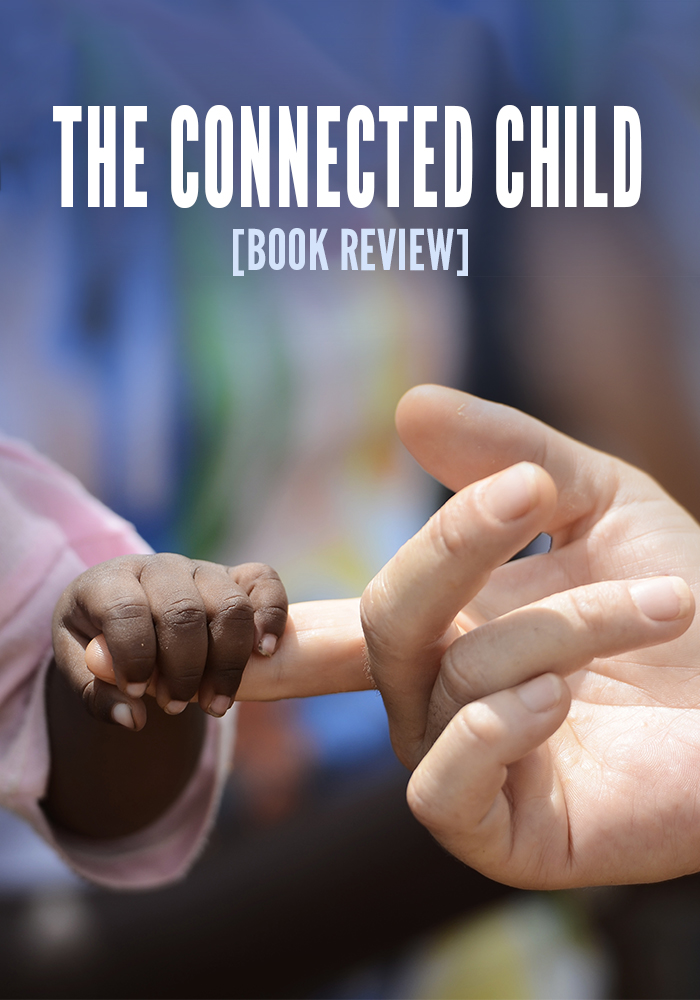The Connected Child [Book Review]

My wife Anna and I have spent this past year going through the required training to become adoptive parents.
One of the most helpful books we were assigned to read is The Connected Child: Bring Hope and Healing to Your Adoptive Family by Drs. Karyn Purvis and David Cross. I wanted to share some of the exciting insights from this book.
The fundamental principle of the book is that we can only love children with troubled backgrounds when we are able to see them holistically.
Too often, parents and experts look at behavioral disorders as if they existed separate from sensory impairments; separate from attention difficulties; separate from early childhood deprivation, neurological damage, attachment disorders, posttraumatic stress; and so on. We take a more holistic approach, because we know from a wealth of scientific research that…neurological, physical, behavioral, and relational skills all develop and emerge together.
To fully see a child (the prerequisite condition for genuine love) requires that we cultivate a disposition of compassion.
With compassion, you can look inside your child’s heart and recognize the impairments and deep fear that drive maladaptive behavior – fears of abandonment, hunger, being in an unfamiliar environment, losing control, and being hurt.
This loving gaze sees past the exterior behaviors of a hurting child and seeks to know and love the interior heart of the hurting child. For example, the authors note the complex ways that interior grief can manifest itself in external behavior: “a child’s grief can take many shapes. It might look like opposition, agitation, aggression, withdrawal, or obvious sorrow. Unless adopted children can authentically express their losses, sadness, and emotions, they will never be able to connect to you or others in meaningful ways.”
Our intent is to see beyond maladaptive behaviors to the real child who has been holed up inside a fortress of fear. We use the term ‘real child’ to refer to the core of highest potential inside a young person. It’s always our goal to free up and reveal this magnificent inner core and to enable the child to experience his or her full potential as a loving, connected, and competent individual.
In other to help us as parents to see the real child, the book provides insights on how to achieve the following parenting goals:
• Disarm your child’s fear response.
• Establish clear and sensitive parental authority.
• Provide a sensory-rich environment.
• Teach appropriate social skills.
• Support healthy brain chemistry.
• Help your child connect with his or her own feelings.
• Forge a strong emotional bond between you and your child.
As an example of the practicality of the book, here’s a technique called matching that can help foster bonds:
Matching is about becoming attuned to another human being and it is a very nurturing activity…For example, by kneeling down to a child’s level when you look her in the eye, or by sitting on the floor in the same position she has chosen to play a game, you send an important, unspoken message that you’re responsive to her, that you ‘see’ and value your child.
The authors do add one caution: “make sure your child sees your touch coming, understands your loving intention, and doesn’t feel trapped.” The authors also note “if your child has a history of harm, sensory processing issues, or an intense fear response, sustained eye contact may be more than he or she can accept in the beginning.” Thankfully, love can heal many wounds: “work to earn her trust over time, and eventually you and your child will be able to share warm, gentle, and emotionally connected eye contact.”
One final insight was deeply meaningful for my wife and me. While American culture prizes individualism and independence, attachment theory suggests that we have a genuine human need for relationship and dependency. I’ve written before about how deeply children need their parents to function as a secure base, but The Connected Child has helped me realize that this need is even more pronounced for kids from troubled backgrounds.
Parents sometimes have the mistaken assumption that they’re teaching independence by keeping their distance. However, many adopted and foster children have already endured too much distance and were required to be prematurely independent, to their detriment. Your child can only reach a healthy level of independence after he has become fully bonded and knows he has a safe base with you, his parents.
